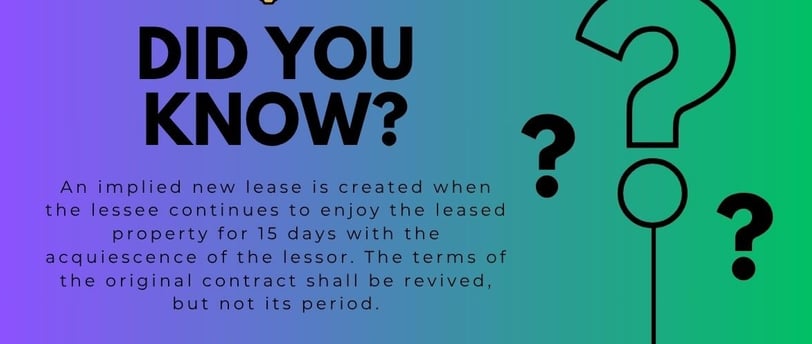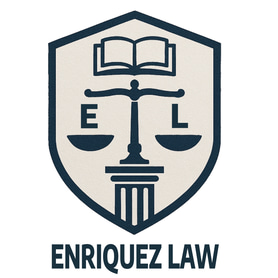Beyond the Expiration Date: Understanding "Implied New Lease" in Philippine Law
Ever wonder what happens when a lease contract ends, but the tenant stays put and the landlord doesn't immediately object? In the Philippines, this often leads to a concept known as an "implied new lease," or tacita reconduccion, a crucial legal principle that can significantly impact both lessors and lessees.
6/1/20252 min read


A Supreme Court decision, ANITA C. BUCE, PETITIONER, VS. SPOUSES GEORGE GALEON AND ERLINDA TIONGCO GALEON, ET AL., sheds light on this very issue of Tacita reconduction" or "implied new lease" , offering valuable insights into its application and limitations.
The Case:
In this particular case, Anita Buce (the petitioner) had a lease agreement over a parcel of land in Manila with the respondents, who are the heirs of the original lessors. The initial contract was for 15 years, with a provision for renewal for another 10 years "under the same terms and conditions."
When the initial 15-year period expired, disputes arose regarding rental increases and the renewal of the contract. The Supreme Court, in an earlier ruling (G.R. No. 136913), clarified that the lease was not automatically renewed, emphasizing the need for mutual agreement.
Despite this, Ms. Buce continued to occupy the property. The respondents eventually filed a case for recovery of possession. Ms. Buce, in her defense, argued that her continued occupation, coupled with the respondents' acceptance of some payments, constituted an "implied renewal" of the lease.
The Court's Elaboration on Implied New Lease
The Supreme Court, in its re-examination of the case, meticulously discussed the concept of an "implied new lease" as enshrined in Article 1670 of the Civil Code. This article states:
"If at the end of the contract the lessee should continue enjoying the thing leased for fifteen days with the acquiescence of the lessor, and unless a notice to the contrary by either party has previously been given, it is understood that there is an implied new lease, not for the period of the original contract, but for the time established in Articles 1682 and 1687. The other terms of the original contract shall be revived."
For an implied new lease to exist, three elements must concur:
Expiration of the original contract: The term of the initial lease agreement must have ended.
No notice to vacate by the lessor: The landlord has not explicitly informed the tenant to leave the premises.
Continued enjoyment by the lessee with lessor's acquiescence: The tenant remains in possession for at least 15 days with the landlord's implied consent.
The duration of such an implied lease is then determined by Article 1687, which pegs the period based on the payment frequency (e.g., month-to-month if rent is paid monthly).
Why No Implied New Lease in Buce's Case?
Crucially, the Supreme Court in the Buce case found that the elements for an implied new lease were not present. The respondents had, in fact, sent a notice to Ms. Buce way back in 1993, reminding her of the contract's expiration and clearly indicating their intent not to renew. This notice, coupled with the subsequent filing of a case for recovery of possession, unequivocally demonstrated the lessors' withdrawal of consent to her continued occupation.
The Court emphasized that even if Ms. Buce claimed she didn't receive the notice, the factual findings of the lower courts belied this. Furthermore, the respondents' acceptance of partial payments did not equate to consent for a new lease. As the Court explained, Ms. Buce was occupying the property, and regardless of the ongoing legal battle, she was obligated to pay for its use. Her occupation, therefore, was merely by tolerance, not under a renewed lease.
Disclaimer: This blog post provides general information and should not be considered legal advice. It is always best to consult with a qualified legal professional for specific situations and legal guidance.
